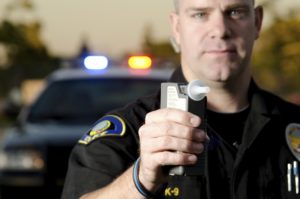Ketogenic Diets or Diabetes Breathalyzer False Positive
Ketogenic Diets or Diabetes Breathalyzer False Positive.
Persons that are on ketogenic diets, or in ketosis due to high protein low carb diets can have false positives. Also, diabetics experiencing ketoacidosis may produce endogenous acetone, which may even, in turn, metabolize into ispropanol alcohol. Ketogenic Diets or Diabetes Breathalyzer False Positive is a problem.
Breath testing devices might better be characterized as relatively specific for detecting ethanol, as practically applied in breath tests of live human subjects.
Consider three types of alcohol breath instruments :
1. SEMICONDUCTOR TECHNOLOGY BREATHALYZERS
The cheapest portable breath testers (PBTs) and some ignition interlock devices use semiconductor technology. These are likely the kind you might buy at Radio Shack as a novelty. I believe that these devices can’t quickly-enough-for-an-instant-test distinguish between ethyl (drinking) alcohol and its chemical cousins, such as isopropyl alcohol, methyl alcohol, toluene, and maybe acetone (which is a keytone). Such a PBT may indiscriminately and cumulatively measure ethyl alcohol and its cousins, if present.
Therefore, a cousin of ethyl alcohol could, by itself, be the source of a false positive for ethyl alcohol. Further, it could be combined with any present ethyl alcohol to result in anelevated positive.
2. FUEL CELL TECHNOLOGY IS RELATIVELY SPECIFIC
More expensive PBTs use fuel cell technology. These are the kind that law enforcement is likely to use in the field. An example of a fuel cell PBT is the Intoxilyzer SD-5. Its operator’s manual at page 23 under “specificity,” declares: “The detector is unaffected by acetone, paint and glue fumes, foods, confectionery, methane, and practically all other non-alcoholic substances at the levels found in human breath.” (Emphasis added.)
Granted, this is a disclaimer by a very interested party, the manufacturer. But note that it doesn’t claim total specificity.
At the very least, fuel cells are relatively specific to ethyl (drinking) alcohol. While fuel cells may react to non-ethyl alcohols, perhaps even those such as acetone found in human breath, they do so at a slower rate, according to Hansueli Ryser, executive director of Draeger Safety Diagnostics Inc., a manufacturer of breath-testing devices.
Perhaps that reaction is too slow (or too slight) to make any practical difference in an instantaneous reading. Perhaps to register, the amount of the interferant cousin of ethanol must be so high that it couldn’t exist on the breath of a living, breathing human.
The science, and the machines, don’t know where to place sorbitol or xylitol as a sugar alcohol which can create a false positive in the spectrum of the alcohol family.
3. SPECTROSCOPIC TECHNOLOGY IS MORE SPECIFIC
Modern evidential breath-testing machines, such as the type used in Orange County DUI breath cases, employing infrared spectroscopy with chopper wheels and/or pulsing light sources, can allow them to distinguish ethyl alcohol from potential interferants, its chemical cousins.
Perhaps an exception would be where the ethanol reading may be slightly elevated because of a false positive vector from isopropanol.


